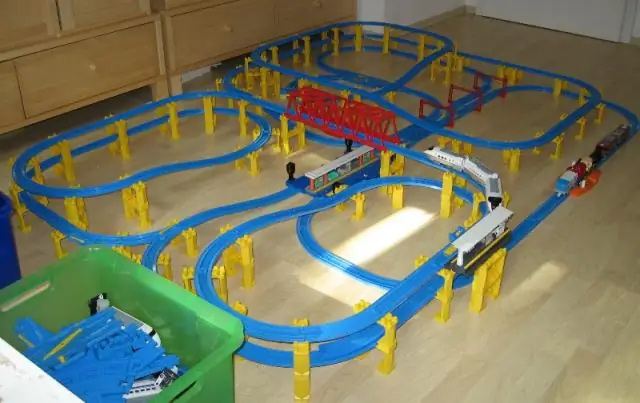
Table of contents:
- Author Bailey Albertson [email protected].
- Public 2024-01-17 22:26.
- Last modified 2025-01-23 12:41.
Figured plasterboard ceiling with your own hands
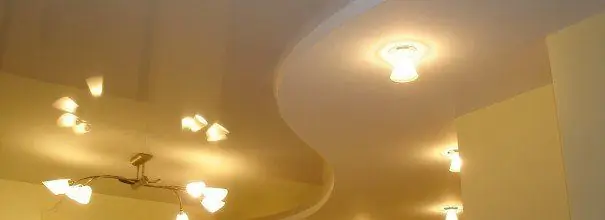
Modern construction technologies using plasterboard allow not only making a ceiling, but creating a whole ceiling system (for example, Knauf ceilings). Moreover, you can independently carry out all the work, without limiting your imagination. Today we will tell you what you need to do in order to make a curly plasterboard ceiling that will fit any interior.
Content
-
1 Features
- 1.1 Benefits
- 1.2 Disadvantages
- 2 Required tools and materials
- 3 Design options
- 4 Surface preparation
-
5 Ceiling layout and installation basics
5.1 Installation process
-
6 Features of creating curly elements
-
6.1 Classic version: multi-level ceiling with a circle
6.1.1 Video - how to make a circular ceiling
-
6.2 How to make a ceiling with an oval element
6.2.1 Creating an elliptical ceiling (video)
-
6.3 Shape with a semicircle element
6.3.1 Making a semicircle on the ceiling (video)
-
6.4 Wave design
6.4.1 Video - how to make a wave on the ceiling
-
- 7 Ways to create a bend
Features:
Nowadays, designers, developers and homeowners don't want to think in the same way and standard. We want to surround ourselves with an unusual interior, and multi-level ceilings in the form of geometric shapes are very helpful in this. And if the first such structures made of drywall look boring and angular, now there are technologies that make the ceiling refined and elegant.
Figured ceilings are referred to as stretch and suspended ceiling systems. Their main feature is the ability to create unique shapes based on a two- or three-level structure. A system of several levels and a selected figure is created on a frame of the desired shape by means of plasterboard sheathing.
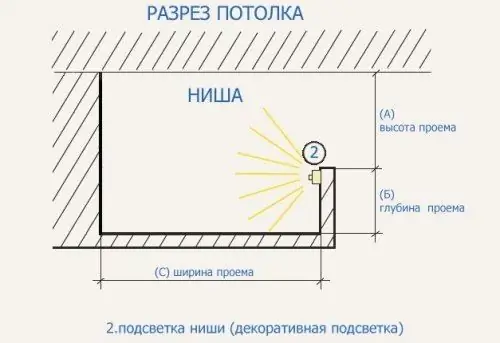
A system of several levels and a selected figure is created on a frame of the desired shape by means of plasterboard sheathing
The originality of such a ceiling is one of its main advantages. But besides this, there are other advantages.
Benefits
- Drywall is a very easy-to-use and inexpensive material. It is easy to care for, practical, which means that such a ceiling will not cause you any inconvenience in the future.
- The multi-level plasterboard ceiling allows you to quickly and easily integrate lighting. You can choose from several types of lighting fixtures, even in different styles.
- The device of a curly multi-level ceiling allows you to visually increase the space of the room and its height. In addition, you can easily divide the room into functional areas.
- Drywall boards will save you the trouble of doing major surface repairs. You do not need to carefully level and putty the ceiling, patching up cracks and irregularities - drywall will hide all the flaws. In addition, it can be given any color by wallpapering or covering with paint.
- Under a multi-level drywall structure, you can easily hide various communications - electrical wiring and ventilation pipes, for example. Due to the ease of working with the material, this will not be difficult even for a beginner.
disadvantages
- The final mass. Drywall is a rather heavy material, and one square meter of such a ceiling in finished form can weigh up to 20 kg. Therefore, during installation, you need to pay special attention to the correct fastening.
- Drywall is very unstable to flooding. The material absorbs moisture, from which it is strongly deformed. If this happens, the figured ceiling is subject to complete repair.
- The plasterboard ceiling structure must never be dismantled after final repairs. Therefore, it is necessary in advance, before starting work, to accurately determine the installation of all electrical communications and the installation locations of lighting devices.
Required tools and materials
Before proceeding with the preparatory stage, we will provide ourselves with everything necessary for work. The list will turn out to be voluminous, but it is better to let the surplus remain than at the crucial moment there will not be an important detail at hand. So, you need to purchase:
- drywall with a thickness of 6 to 12.5 mm, depending on the desired result;
- metal ceiling profiles CD;
- guide profiles UD;
- self-tapping screws;
- profile extensions;
- putty;
- connectors;
- wedge anchor;
- suspensions;
- dowel-nails;
- reinforcing paper;
- photographs of finished plasterboard curly ceilings.
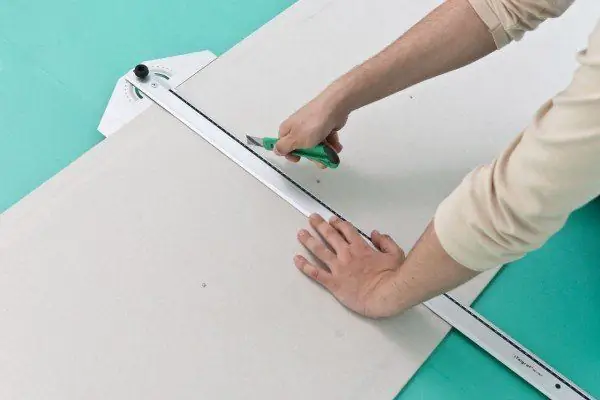
To work, you will need a number of necessary tools
For installation work you need tools:
- rule;
- level;
- puncher;
- roulette;
- screwdriver;
- cutter;
- plane;
- spatulas;
- square;
- construction knife;
- grinding device.
In order to accurately calculate the amount of required materials, you need to decide on the design of the future ceiling. The easiest way is to familiarize yourself with photographs of curly plasterboard ceilings on the Internet or in specialized magazines. You can contact professional designers or try to develop the design yourself. In the latter case, you will need skills in working with special computer programs.
After you have decided on the design, you can start designing and marking the ceiling. First of all, you need to create a sketch of the structure on paper, and then transfer it to the work surface.
Design options
-

Image - Sky
-

Image - Flowers
-

Image - Wave
-

Image - Flowers
Surface preparation
Despite the fact that drywall will help you hide the flaws of the main ceiling, you still have to carry out preparatory work.
- Clean the ceiling surface from the old finish. Remove wallpaper, ceiling panels, or tiles.
- If your ceiling has been whitewashed and the flooring is in good condition, you do not need to wash it off. But if noticeable cracks or delamination appear on the surface of the whitewash, you will have to remove it, otherwise, over time, all this will crumble and lie on the inner side of the ceiling, adding weight to it.
- Dismantle the chandelier and light fixtures that were installed on the main ceiling. You may want to install special built-in lamps on the pendant structure, or the lights will be arranged in a different order.
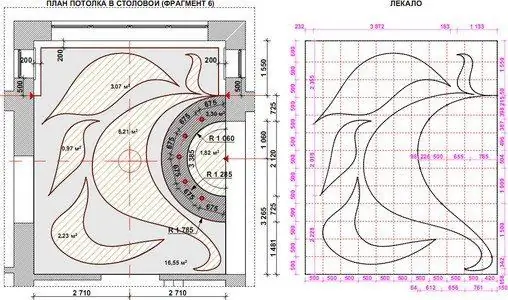
Ceiling plan
After cleaning the ceiling, proceed with the marking. First of all, you need to determine the levels of the future ceiling vertically.
Ceiling layout and installation basics
Measure the height of the room in all corners and choose the smallest value. Count down from the top of the lowest corner 50-100 mm - this becomes the height of the first level of the ceiling. Focusing on this point, draw a horizontal line around the perimeter of the room. Do not forget that at each level about 10 cm of the height of the room "sneaks", so take into account the dimensions of the room.
Decrease again about 100 mm from the baseline. This distance depends on the size of the lighting fixtures that you will later build into the structure. This line will become the border of the lower edge of the second level.
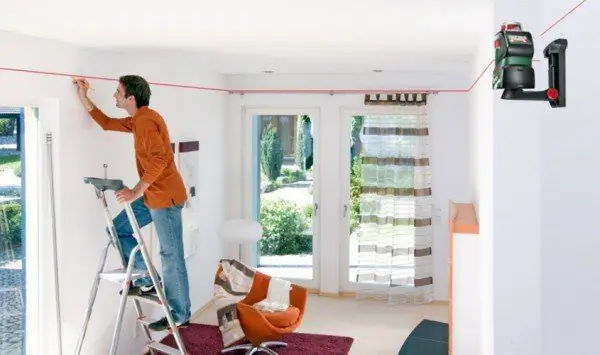
Markup process
Now you need to make a horizontal layout. For the first level, draw lines on the ceiling along which the hangers will be attached. The marking of the second level is done depending on what configuration was planned: either on the first level after it has already been sheathed, or directly on the ceiling.
To mark curves, use a profile strip with holes drilled at the end. Insert a nail into one, which will serve as a compass needle, into the other, a pencil or marker.
Installation process
Once you have marked the ceiling and made sure it is correct, proceed with the installation. First, install the first level frame. You need to start with a start profile - it will serve as the basis. Then fix the hangers according to the marking. Fix the main profile on them with self-tapping screws, and put the ends into the starting one. Now cover the first level with drywall. Depending on the construction of the second level, the cladding can be made around the entire perimeter or partially.
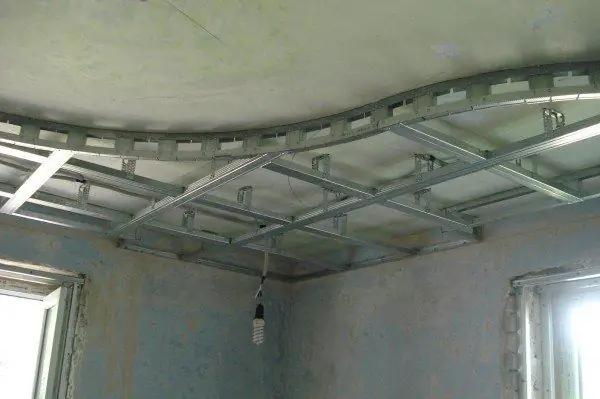
When installing such a structure, you do not need to sheathe the first level of the ceiling completely with plasterboard
The next step can be challenging and will require your special attention. If you plan to make a ceiling with bends and curved lines, first prepare the base profile. Make cuts in it every half a meter, bend and add segments of the main profile to it at a distance of about 200-300 mm. Check the level and remove the protruding parts. Repeat the procedure depending on how complex the drawing is.
Features of creating curly elements
The previous tips will give you basic knowledge of layout and installation work. Now we will talk in detail about how to make a curved plasterboard ceiling using various elements. It is easy enough to mount a square or rectangular structure, but in order to use options with rounding drywall, you will have to try.
Classic version: multi-level ceiling with a circle
First of all, you need to draw a circle on the ceiling. To do this, screw in a screw in the center of the area where this element is planned, tie a strong thread or wire to it, and fasten a pencil at the other end. Draw a line in a circle as if using a compass.
For installation, you need a UD profile 25 mm wide or UW profiles 50, 75 and 100 mm wide. For example, let's take the widest profile of 100 mm so that the depth of the second level, including the filler and the thickness of the drywall, is about 120 mm.
The side walls of the profile are notched at the same distance (5 or 7 cm). Screw the profile through the gypsum board to the upper frame strictly relative to the line with self-tapping screws.

This is what a profile looks like when screwed along the marked circular mark.
At the level of the circle profile, screw the UD profile to the wall and insert the CD profiles into them. In places where the CD will be longer than 50 cm, reinforce the profile with a hanger.
Cover the second level with drywall. Cut the sheets in a circle after they are screwed. To overlap the vertical plane, cut a strip of the desired width and, after 5-7 cm, trim the paper on it from the convex side of the bend.
Video - how to make a circle-shaped ceiling
The video shows the process in more detail:
How to make a ceiling with an oval element
In general, creating a multi-level oval ceiling is not much more difficult than assembling a circle. But, of course, there are some peculiarities.

Oval element marking scheme
Let's consider this scheme in more detail.
- You need to build a coordinate system with the primary target point. In this case, the parties must be equal. You can lay off equal straight line segments on 4 sides. These will be the centers of the oval we need at points a, b, c and d.
- Points a and c are opposite. Let's measure the distance between them. This will be the diameter of the circles. For example, 50 cm. Divide by 2, we get a radius of 25 centimeters. Similarly at point b.
- We get 2 equal circles separated by a segment.
- We form an oval through points b and c, which we have left. We connect two circles with an arc on both sides.
Now arm yourself with a thread, a pencil, and a few screws. Mark the focal points of the oval on the ceiling so that the points coincide with the centers, a and c.
Fasten the self-tapping screws, pull the thread with a pencil on them, and keeping it strictly vertical, bring the oval out. Correct the line if necessary.
Take a profile and cut it into sections equal to each other in size. Attach to the ceiling and screw drywall.
Create an elliptical ceiling (video)
Watch a video that shows the process in more detail:
A shape with a semicircle element
First of all, you need to mark the surface. Mark the centers of the semicircles, outline the circles, mark the places where they go into a straight line. Mark the places where the frame is attached.
Transverse ribs can be separated by 1 m from each other, longitudinal ribs are best done at a distance of 0.5-0.6 m.
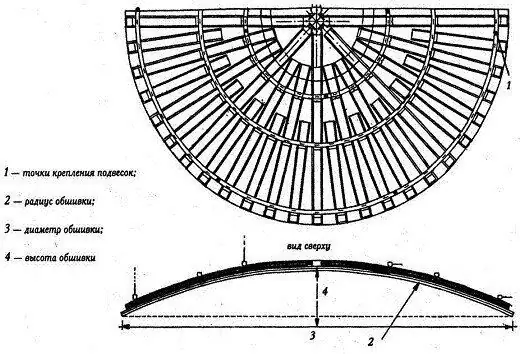
Ceiling scheme with element
In order to make a skeleton, you will need:
- ceiling guide profile 28/27, which is attached to the wall;
- ceiling profile PP 60/27;
- connectors of PP profiles of the "crab" type;
- U-shaped connectors (direct hangers), if the distance from the main ceiling to the suspended one is not more than 0.11 m;
- string suspension at a distance from the ceiling to the hinged one more than 0.11 m.
Mark the level of the upper part of the structure on the walls and attach the PNP profile. Mount the hangers in the places marked on the ceiling using dowels.
Attach the main supporting frames to the suspensions and profiles, observing the distance between them 04, -0.6 m strictly parallel to the wall. Saw off the ends of the profiles that remain outside the stencil with a grinder.
Cut the PCB profile into pieces equal to the distance between the supporting frames. Secure with crab. Observe the distance between the crossbars up to 1 m.
Decorate the enveloping edge of the future ceiling. To do this, make cuts at an equal distance on one side of the profile. The smaller the radius of curvature, the more often you need to make cuts.
The last thing to do inside the frame is to distribute the wiring. After that, you can install drywall on the horizontal surface of the hinged structure. Cut the sheets according to a stencil and carefully attach to the finished frame. Place the gypsum board along the window so that the joints are less noticeable. Do not forget to recessed the caps of the screws.
Mount the vertical section of the ceiling by bending the drywall sheet into a semicircle.
We make a semicircle on the ceiling (video)
Watch the video on how to do it yourself.
Wave design
If you understand how to make a circle and an oval, then the wave will not be difficult for you. The markings can be applied using a compass, which can be easily replaced with a screw, wire and pencil (as in the previous versions), or in other ways:
- freehand - mark points on the ceiling and draw a curve along them;
- according to a pre-prepared template applied to the ceiling and drywall sheet;
- by eye - not the most reliable way, but allowing you to create an exclusive; use only if you are confident in your abilities.
In general, the process is no different from the previous options.
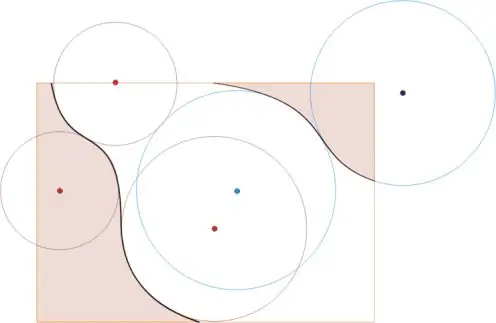
Ceiling marking scheme with elements of waves and bends
In this diagram, you can see how easy it is to create the desired pattern using the compass principle.
Video - how to make a wave on the ceiling
In the video, you will see the whole process in detail:
After all the work is finished, you just have to putty the ceiling, paint it and mount the lighting fixtures.
Ways to create a bend
If this is your first time working with drywall, then a question may arise before you: is it possible to bend such a rigid sheet, giving it smooth shapes, and not break it? Yes, this is not difficult to do. We will give you a couple of tips. In order to smoothly bend drywall, there are two ways: using water and using cuts.
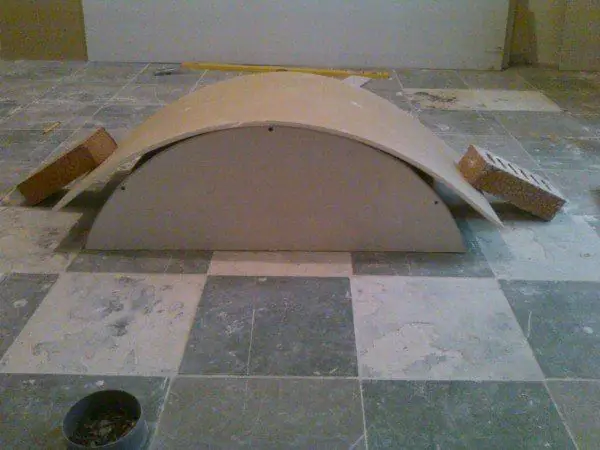
Bending a drywall sheet is easy enough
In the first case, you need a ready-made frame. Use a jigsaw to cut a strip of drywall that you will mount on a vertical ceiling element. Use a roller with nails or needles to roll the wrong side of the sheet so as to pierce the top cardboard layer. Then wet this side with water.
When the inner layer is soaked, attach the strip to the metal workpiece, bending it as needed.
This method has a drawback: if the inner side gets a little wet, instead of a smooth surface, you will get creases on the sheet, which will be very difficult to plaster. If you mounted the frame on the ceiling, it is better to bend the sheet on another surface using a stencil.
When using the second method, vertical cuts are made in a strip of drywall at equal distances. Do not cut right through; one outer layer should remain intact. Then secure the strip to the frame, carefully creating a bend along the cuts.
As you can see, it is not difficult to cope with a multi-level figured plasterboard ceiling on your own, without the involvement of specialists. If you have any questions, ask them in the comments. You can also share your experience in this work. Good luck to you!
Recommended:
How To Make A Swan Out Of A Tire With Your Own Hands: Video, Photo, Diagram And Step-by-step Instructions
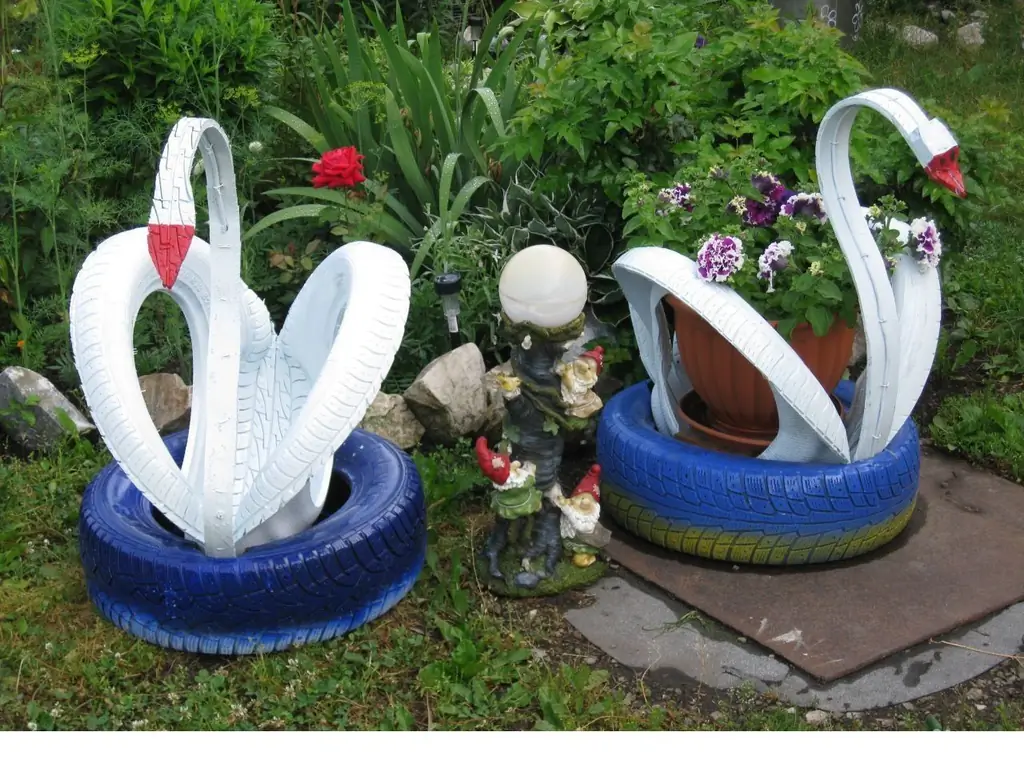
Step-by-step instructions for making different shapes of swans from old tires. Necessary materials and tools, possibilities of use
How To Build A Decorative Fence For A Garden And Other Needs With Your Own Hands - Step By Step Instructions With A Photo

You can make an original and unique decorative fence from the simplest materials, besides, do it yourself. Step-by-step instructions, photo
How To Catch A Rat, Make A Rat Trap With Your Own Hands From A Bottle Or In Other Ways, How To Install, Charge And What Bait To Put In The Trap + Photo, Video
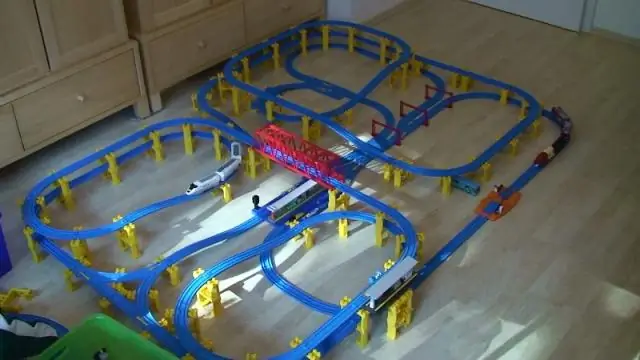
Tips for getting rid of rats with effective DIY traps. Step-by-step instructions for rat traps. Catch it or not. Photo and video
How To Make A Florarium For Succulents And Other Plants With Your Own Hands: Step-by-step Instructions With Photo And Video Master Classes
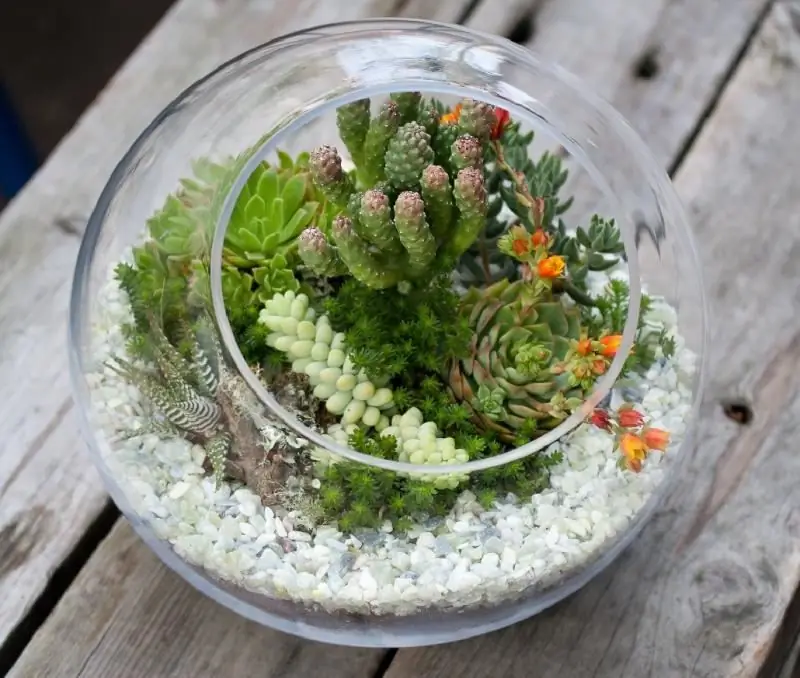
What is a florarium and what are its benefits? How to decorate the interior with it by doing it yourself?
Correct Arrangement Of The Chicken Coop Inside With Your Own Hands, Video And Photo
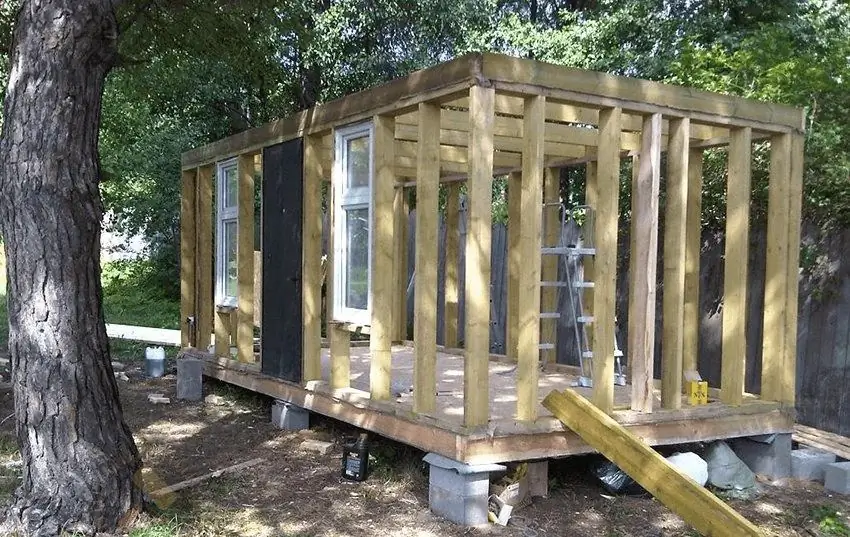
Arrangement of the chicken coop from the inside: practical advice, choice of materials, arrangement of a pen and roost
